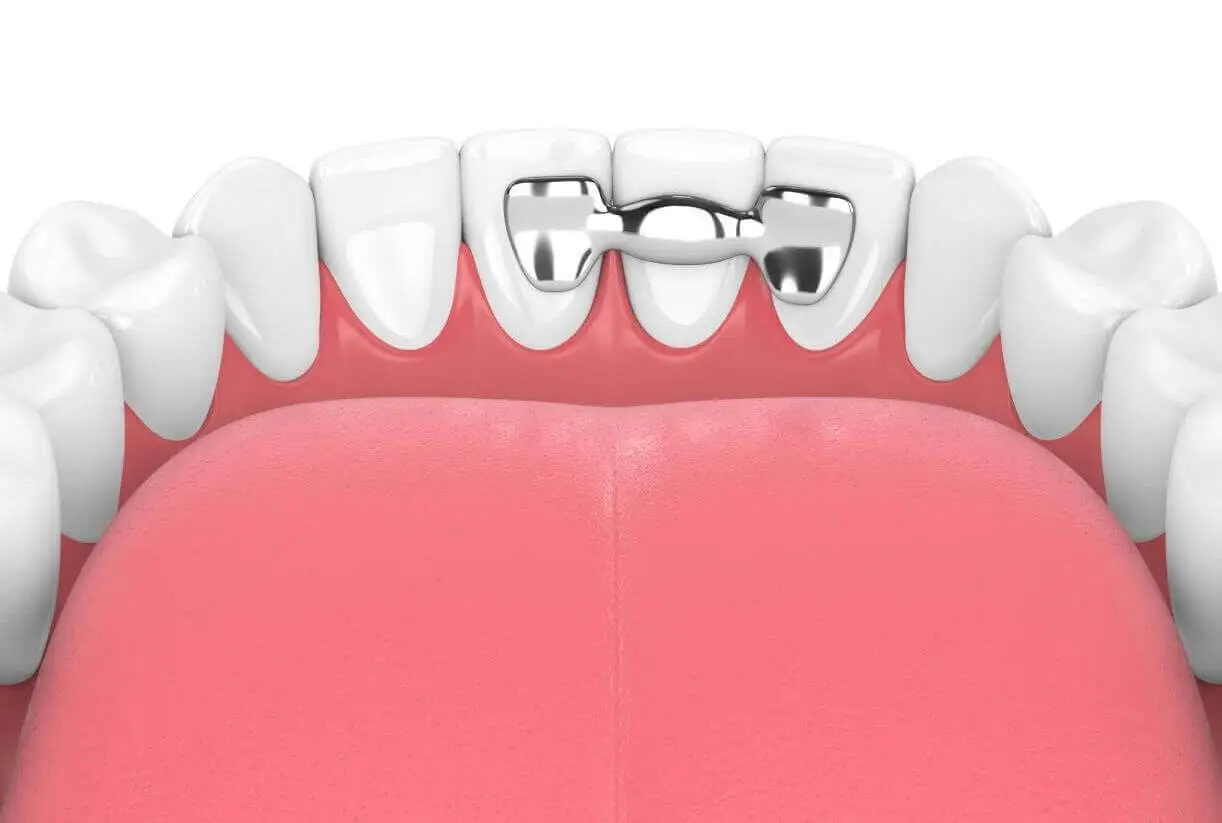If you are looking for a non-invasive solution for multiple missing teeth, you may want to ask your dentist about a dental bridge. Dental bridges, or teeth bridges, are a time-tested approach that can help restore your smile and daily oral functions with a simple, non-surgical procedure. Our experts have written the following guide based on some of the most commonly-asked questions about dental bridges and dental bridge procedures, so that you can enter your appointment with confidence.
What is a Dental Bridge?
A dental bridge or “tooth bridge” is a dental solution that consists of an artificial tooth or multiple artificial teeth fused together, which then act as a single piece or “bridge” between the existing teeth. This bridge is attached to these “abutment teeth” to ensure a secure fit with a natural look.
What are Dental Bridges Made Of?
Dental bridges are typically made of crowns on either side of the missing tooth or teeth supporting the “pontics.” (false tooth) and is cemented in place. Depending on the type, pontics are usually made of porcelain fused to metal, dental ceramics, or dental plastic as these materials blend in best with your teeth. Gold pontics are less common and typically more expensive.
Uses of Different Types of Dental Bridges
There are a few different types of dental bridges that each have their own unique procedure. The type of dental bridge you receive will primarily depend on which teeth you are missing, how many teeth are missing, and how healthy the rest of your teeth are.
Your dentist will work with you to decide which dental bridge procedure is going to give you the most natural looking smile.
Traditional Bridge
The most common type of bridge is a traditional or “fixed bridge”. These consist of an artificial tooth or teeth attached to two crowns, which are cemented onto the abutment teeth on either side of the gap.
Cantilever Bridge
A cantilever bridge is very similar to a traditional bridge, but is only secured to one natural abutment tooth on one side of the tooth gap. This solution is becoming less common over the years, and is not recommended for back teeth.
Maryland Bridge
A Maryland bridge (also known as a resin-bonded bridge) is supported by a metal framework that runs along the base of your abutment teeth for more stability. This is a common solution for front teeth replacement.
Implant-Supported Bridge
If you are missing many teeth in a row, or in certain places in your mouth like the front or the back, your dentist may recommend an implant-supported bridge for additional stability. This type of bridge uses dental implants to either support each false tooth in the pontic, or to serve as the abutment teeth if an implant for each missing tooth isn’t possible.
It is important to note that this type of dental bridge will require minor surgery to install the implants into the jaw.
What is the Process of Receiving a Dental Bridge?
- You’ll consult with a dentist to determine if a dental bridge is right for you. The dentist will examine your teeth and overall oral health during this time, and discuss your overall needs and budget.
- If you are getting crowns on your abutment teeth, your dentist will prepare them by filing down the shape of your tooth along the sides and across the top. This is an outpatient procedure done under local anesthetic or other pain management; your dentist may be able to prep your abutment teeth during your consultation, or you may need to come back in.
- Then, the dentist will take impressions and measurements of your mouth for the pontic, crowns, and/or framework. That information will be sent away to a lab and you’ll be given a temporary bridge or crowns to cover your newly prepared teeth. At our local offices, we employ on-site dental labs to ensure the fastest turnaround time for fabrication. We can often complete production in just one day. Remove this- our labs do not fabricate bridges. We send them out.
- Once your bridge is in, your dentist will try it in your mouth to check the fit and make any necessary adjustments. Often, your dentist will temporarily adhere your bridge in place so that you may see how it fits in your mouth. Once you like the fit and feel, a more permanent adhesive will be used to more permanently secure the bridge to your teeth.
- With proper care, you shouldn’t need appointments for additional adjustments or replacements of your bridge for several years. Of course, you should always reach out to a dentist if your bridge is causing pain or comes loose.
How Much Does a Dental Bridge Cost?
Dental bridge costs can depend on many different factors. Cost may be influenced by the type of dental bridge, how many you receive, any additional procedures that may be needed (such as extractions for implant-supported versions), and the overall condition of your oral health.
At Affordable Dentures and Implants, our dental solutions are crafted around your needs and budget. Our staff will walk you through all your options, including insurance benefits and financing plans, to help you determine which is the best for you.
How Long Do They Last?
With proper and frequent brushing, flossing, and professional cleanings, bridges commonly last between five and eight years — and some up to ten years!
You Deserve to Love Your Smile!
Dental bridges are a classic dental solution for multiple missing teeth that help restore your smile and get you back to enjoying life. If you have multiple missing teeth and think a dental bridge may work for you, find a local local office near you to speak with a specialist and learn more.



